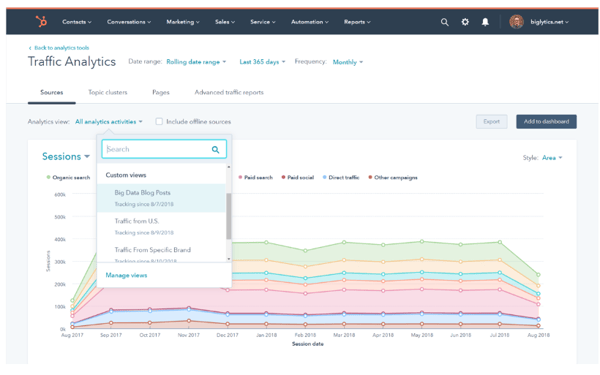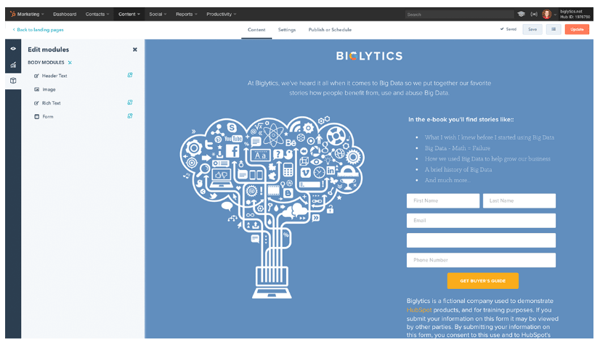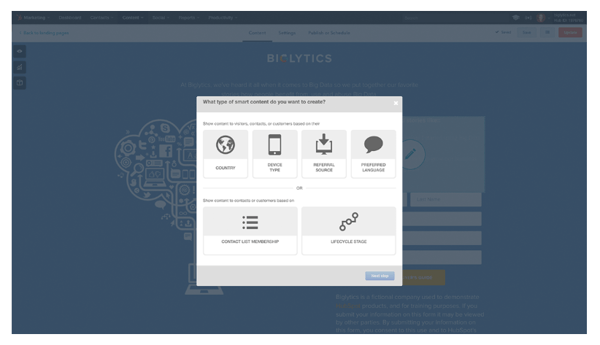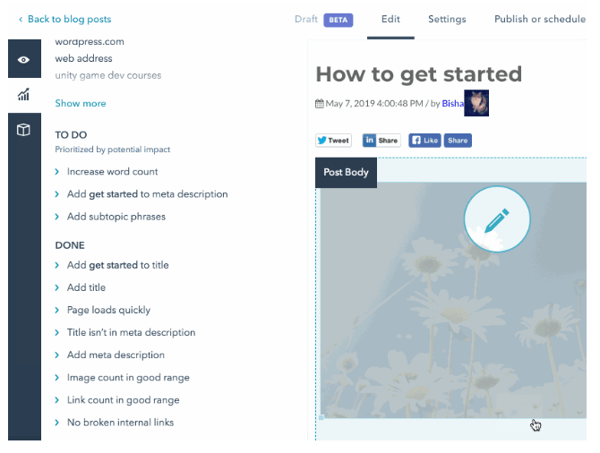With HubSpot, though, the paradigm has shifted. No longer are you bound by strings of code and stylesheets you need to craft on your own. There's also no need to spend hours searching for the right freelancer to lend a hand.
HubSpot levels the playing field, and if you understand how to use the different types of pages, your site will be performing with the best of them.
How to Make Your HubSpot Landing Pages and Site Pages Produce Dramatic Results
On all HubSpot sites, you're able to use a drag and drop interface to build pages from pre-defined modules, rather than needing complete strings of code for each section. This makes building your pages intuitive and reduces the need for a developer to hold your hand through the process.
Additionally, all HubSpot pages are optimized for mobile, and since a large population will be viewing your site from their device, this is becoming more critical than ever.
To get the most out of your site and landing pages, you should understand the basic goals of each and the general practices to make them exceptional. Then, it only requires some attention and HubSpot's comprehensive toolbelt to earn the build the page you're after.
HubSpot Site Pages
Site pages are the building blocks of your website. These normally include your homepage, about us, contact us, and a few about your product or service. Links to these pages are normally displayed at the top navigation and in the footers.
Your page goals may vary, but they're still distinct from landing pages and blogs. For example, a homepage should explain how your product or service benefits the reader. Users could convert on the homepage, but that's not the primary goal.
Mixed into this category are pillar pages. These are thorough and well-defined pages that include a comprehensive base of knowledge for a specific topic. Any article that fits into that topic will link back to its pillar page, so it's essential these are well created.
Site pages also need to be optimized for SEO, including links, keywords, and everything else. If someone searches for something related to your site, you want to ensure your pages have a chance at ranking. While your blog will do the heavy lifting on this front, if someone searches for "my problem phone number," you'll likely not have content to answer it. By ensuring your pages are optimized, your site could rank for that specific term.
Fortunately, HubSpot's optimization tool, featured inside the page editing tool, will list everything you need to do to improve the chances of it ranking.
On HubSpot, your site pages can be added to dashboards or into campaigns so you can track their performance without much effort.

With the platform's native analytics, all the data you need is tracked and can be displayed as all pages or broken down to the individual level. You can focus on page views, conversion rates, bounce rates, new contacts, and more.
HubSpot Landing Pages
Unlike site pages that provide overviews of your company or product, landing pages focus specifically on converting leads for a distinct offer. These pages normally have no navigation except for the CTA, as external links deter customers from the page's goal.
Landing pages are often associated with a specific advertisement, either on your site or off it. For these pages to convert higher, it needs to be immediately apparent that the page is directly related to the offer they followed.
Many brands make the mistake of spending a ton on ads and sending them all to a site page, the most common being to the homepage. While this is common, it wastes a lot of money as fewer people convert when they land on generic pages with no incentive incorporated.
FREE GUIDE
Get The HubSpot Onboarding Guide.
Set your team up for success on HubSpot with frictionless onboarding. You’ll learn about:
- Initial HubSpot setup
- Lead management
- Process automation
- Success planning
Thanks for submitting the form!
HubSpot's analytics offer all the same data as site pages, but you'll find the CTA views and submissions far more useful on this front. Similarly, you can add landing pages to a dashboard to get quick snapshots of their performance.

Landing pages are easy to create with HubSpot's tool. With it, you can create landing pages from scratch, selecting a template, either from your own database or purchased from the HubSpot Marketplace, and then you can fully customize them with modules.

HubSpot uses a system that enables Smart data. This means CTAs and other modules can be changed based on the user's location, device type, referral source, or language. Ultimately, it's a way to personalize content for each user to increase the chances of converting.
This tool also allows you to A/B test pages. For the best results, change something you think will have a large impact, and give it some time for results to build. With a Growth Driven Design approach, you'll be optimizing your site constantly and seeing improvements throughout.
HubSpot gives you the ability to create customizable forms, as well, meaning you can get specific data from your conversions that can drive further interactions. Some tools limit you to standard fields that hinder your effectiveness.
Getting the Most From Your Pages
To the average visitor, there may not be a lot of difference between a site page and a landing page, but their overall purpose is quite different. If these pages and tools are used correctly they can yield great benefits to your business.
Your site pages will build a website for all visitors to view and experience what you have to offer, while your landing pages will yield you hard conversions and give you more of those much-desired leads. It will drive your CPA down, and increase the value of each individual lead.










